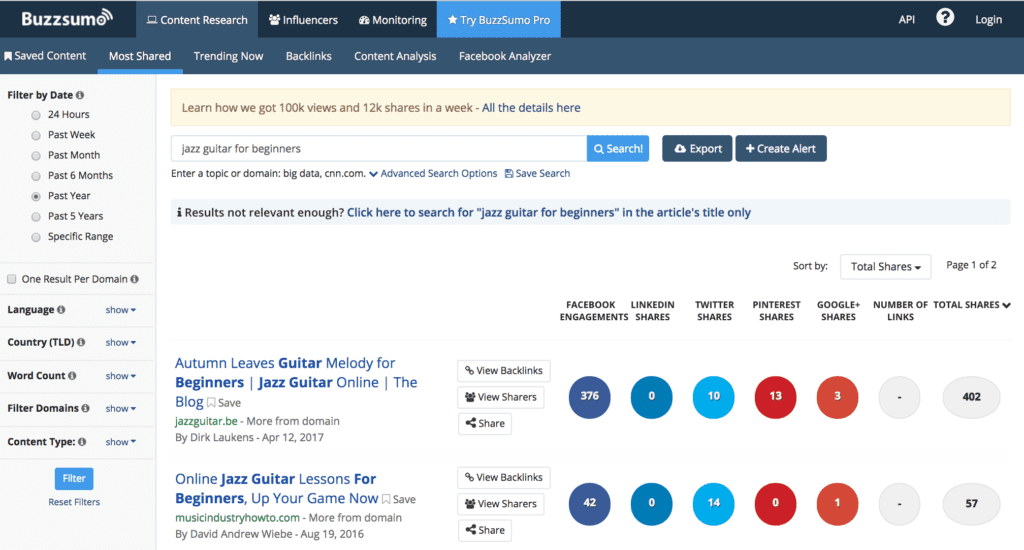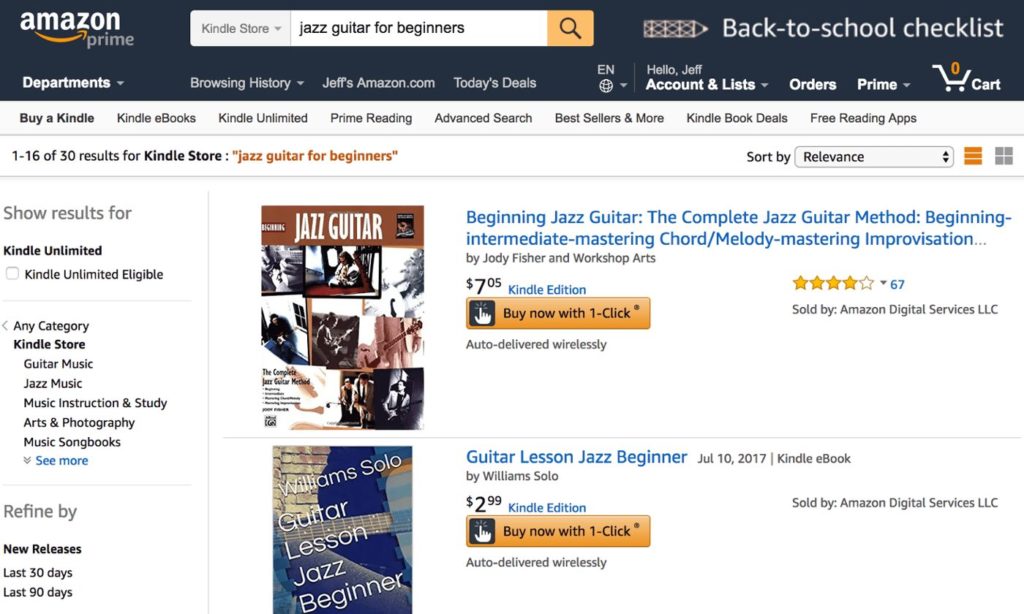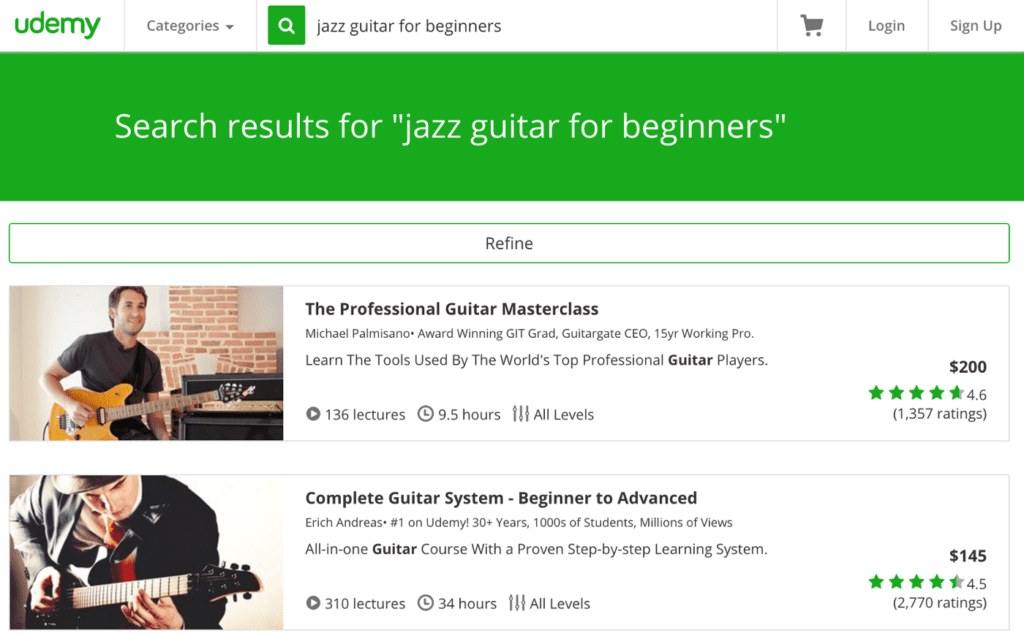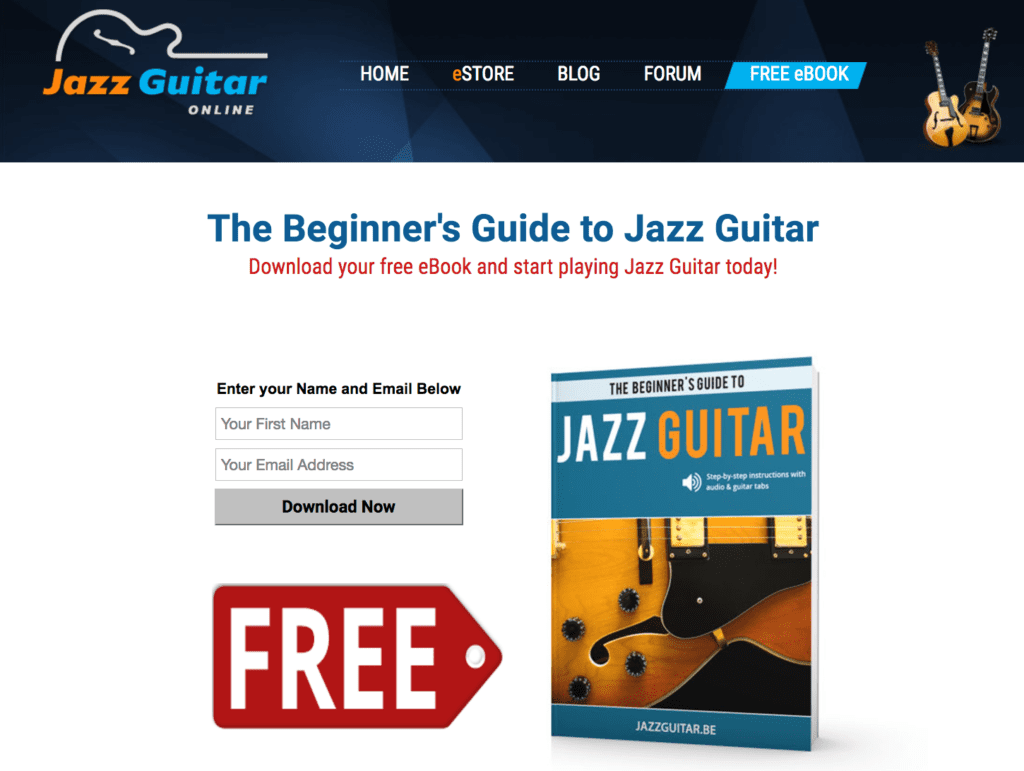
Our whole focus at Learning Revolution is on helping you convert your expertise into monetizable products like online courses, memberships, and virtual events. But when you come up with new product ideas, how do you know there is a market for them? How do you know they will sell?
It’s a question every edupreneur – in fact, every entrepreneur of any sort – faces again and again.
Fortunately, it’s also one that technology makes easier—and more affordable—to solve than ever before. There are now many free and low cost ways for entrepreneurs to assess and validate the potential market for their products. In this this article, we’ll take a look 15 of them.
“Validating” your market simply means taking steps to be as confident as you can that the market is there and that there are people likely to think your product idea is valuable and will pay for whatever you create.
To make this process and the list of tools easier to digest, I’ve grouped the different approaches you can use for market validation into four types of activity: searching, listening, asking, and testing. You don’t have to use all of the tools I suggest, but I encourage you to use at least one tool in each activity area. This is the best way to vet your idea from the ground up and ensure that you get high-quality results.
Also, given the focus of Learning Revolution, I’ve written this from the perspective of validating an online course idea, but the process and most of the tools can be used for any idea – and particularly digital product ideas – with minor tweaks like, for example, simply substituting your type of product for “online course” wherever I use it.
But First …
While the tools and approaches I cover here are very valuable, I’d be remiss if I didn’t say up front that the best way to validate any new product idea – is through interaction with an existing audience. This doesn’t have to be a big audience – even just a few dozen people can give you invaluable input – but it should be made up of people who really represent your target buyers.
So, get as clear as you can about who your target audience is and start building an audience as soon as you can. This approach can take a bit longer, but it dramatically increases your chances of creating a product that people will actually buy. The good news is that many of the techniques covered in the rest of this post can help with building an audience and/or help you get quality feedback from your audience as you build it.
So, now let’s move on to the tools and approaches.
Searching
Searching is always a good place to start. Search engine results are, after all, a record of what actual people are looking for and what they have tended to click on the most. The key to using them effectively, though, is to have a crystal clear understanding of the value your course will be designed to provide and then think hard about the words or phrases a prospect seeking that value might type into a search engine.
Keep in mind that prospects are not necessarily thinking, “I need to find me an online course.” They just know they have some sort of problem they are trying to solve, a burning question they want answered, or a goal they want to achieve.
With that in mind, draw up a list of 5-7 short phrases (3 to 5 words) you feel confident a prospective customer might use when searching for help on the problem or opportunity your product idea is intended to address. Try these out in the following places:
1. Google
You may as well start with the obvious. Run a search on each of the phrases you listed to see what comes up, including:
- How close or relevant to your online course idea are the page-one results?
Be sure to pay attention to the related searches that come up at the bottom of the page. You can get some good insights into how best to title and describe your course to attract learners to it.
- Do videos come up on page one?
Since so many courses are video-driven these days, the fact that there are already popular videos is encouraging.
- Are there relevant ads on the page?
This is actually a very good sign. It means there are people who care enough to spend money trying to reach your audience.
- Are there any actual courses already available?
Try adding “course,” “lessons,” “workshop,” “learn to” and other similar words and phrases to your search terms. Do items similar to or closely related to your potential course topic show up? Again, do you see any ads? These are actually good signs. They mean there are businesses that think there is money to be made from your topic.

As you may have already gathered from the points above, finding competitive or semi-competitive offerings in your topic area is not a bad thing: in most cases, you want to go where there is clear interest and people are already spending at least some money. If you don’t see any signs of competition, you need to put some serious thought into why. Maybe your online course idea is innovative and valuable enough to create its own demand, but most course ideas—even really good ones—aren’t.
2. BuzzSumo
BuzzSumo, a search engine that gives you visibility into what content is popular by topic or on a specific website, is a great tool to have in your mix for many reasons. You can use it, for example, to see how your own content—or your competition’s content—is doing on social media. You can also use it see how popular a course topic you are considering is.
Just type your topic or keywords into the search field, click “Search!” and you will get a table showing the sites that are getting the most likes, shares, and links on that topic. These results will give you good insight into how popular a topic actually is and also where it has gotten traction—i.e., on Facebook, LinkedIn, Pinterest. This will help you not only validate and refine your topic, but also determine where you might want to consider promoting it.

Now, BuzzSumo is not a free tool, but there is a free 14-day trial. After that, it starts at $99 per month, with significant discounts for yearly subscriptions. Really, it is a valuable enough tool that serious course entrepreneurs should consider the paid version.
3. Amazon
Now, back to totally free tools. Amazon is, of course, well-known as a place to buy just about anything. We tend to forget that all of that buying is made possible by a very powerful search engine and that searchers on Amazon are very often seeking knowledge.
The Kindle eBooks area on Amazon is particularly valuable for course entrepreneurs. It contains not only electronic versions of commercially published books, but also a huge number of eBooks published on niche topics by knowledge entrepreneurs. Whether these types of books exist in your market—and whether they seem to be selling well—is definitely information worth finding out.
So, type your search terms into the Amazon search bar and select “Kindle Store” from the drop down. If the results show several offerings closely related to you topic, and in particular, if any of them have an Amazon Best Seller Rank (under Product Details) above 200,000, you know you are probably on to something.

4. Udemy
Finally, be sure to search on the site that has become the Amazon of online course sales. (In fact, don’t be surprised to see Amazon buy it one of these days.) While I am not a big fan of Udemy as your main channel for selling online courses (courses quickly turn into low-priced commodities there), it is undeniably a great source of market intelligence. After all, the people visiting the site are interested in online courses.
So, once again, try out your online course idea and related keywords in the search engine on the Udemy home page. Take a look at how many courses turn up and how many ratings they have gotten. It’s also a great idea to look at the nature of the content—e.g., how many lessons are there, what are topics covered, how are the best rated course described and what level are they?
You can get some great information here for how to describe, organize, and position your own course.

Before we wrap up the Search area, it’s important to note that you want to see reasonable signs of demand in most, if not all of the searches above. “Reasonable” is open to interpretation, but in general, I get worried if I don’t see at least a couple of the following:
- Search volume in at least the hundreds of thousands for broad (no quotes) searches on Google and at least one or two exiting courses (online or off)
- Hundreds, if not thousands, of Facebook likes on Buzzsumo
- Two or three eBooks related to the topic on Amazon
- Multiple courses with more than 10 ratings each on Udemy
Naturally, you have to exercise your judgment, but if you are not seeing any of the above, then you may need to rethink your topic – or at least come up with a solid, logical reason why none of the above would apply to your topic.
(Note: If you are testing a product idea for something other than an online courses, there is almost certainly some sort of marketplace site or review site for that type of product. Use it to get the same sort of insights I describe above for courses.)
Listening
You can usually do everything described above under Searching in less than an hour, making it a great way to get a quick read on your course idea and how large the market might be. The next area, Listening, is most effective when you do it over several weeks, or even months. I use the term “listen” as metaphor for paying close attention to language and behavior relevant to your course idea. You can do this in places on the Web where people are writing/talking about your topic or closely related areas. Here are four key places to listen in.
5. Quora
Quora, a popular question and answer site, is a place you may also want to consider as part of your searching activities above. I find it most valuable, however, to see what happens with a topic on Quora over time.
You can see what people are asking about and then track how much activity their questions spark. You can follow topics and questions and, again, see what gets added to them over time. You may even want to ask questions about your topic here yourself to see what response you get. (If you ask a question, be sure not to ask it in a “leading” way—that is, in a way that leads the respondent toward answering the question the way you want.)
As a bonus, popular Quora questions tend to rank well in search engine results. So, any answers you provide may also give you a way to drive some traffic back to you site. I’m actually experimenting with this some right now. If you like, you can check out my profile on Quora. (One of my own posts is actually on this very topic of validation. Up Votes appreciated!)
6. Feedly
Feedly is a great tool for aggregating feeds from a wide variety of blogs. Subscribe to the blogs of people—particularly those with a significant following—who are already creating content related to your target topic area. Ask:
- What are they publishing about?
- What are some of their most popular posts? (This is a metric you can see in Feedly.)
- Do they align with your target topic?
- How is your take on this topic different?
Feedly also lets you tag, organize, and search on the content you track, so you can really pull together some great insights to help you validate your online course idea.

Be sure to look for patterns as you review the content you have organized and tagged. Even if the titles don’t align exactly with the topic of your course, do they point toward the same general problem or opportunity you intend to address? What aspects of your topic seem to get talked about the most?
Paying attention over time will almost always help you focus your course idea and identify what will be most valuable to your prospective learners.
7. Blog
Even with all the emphasis these days on social media, video, and other forms of communication, I continue to believe that a strategically managed blog is one of your most valuable assets an entrepreneur can have. As far as “listening” goes, by posting content related to your course topic over time, you will be able to see which of your posts are most popular. Pay attention to:
- Which posts attract the most visitors?
- Which posts get shared?
- Which attract comments?
- What do people says about your posts, whether in their comments on your blog, in posts that link to you, or on social media?
In general, if a topic generates significant activity on your blog, you can have much more confidence that it will succeed as an online course idea.
Obviously, this is not a short-term strategy—it takes time to build up a body of blog content. But as you do you will gain more and more visibility into what really resonates with your audience.
As a bonus, you can (and should) use your writing for your blog as a way to develop some of the core content that you will ultimately use in your course.
8. Analytics
Naturally, as part of tracking what is happening on your blog, you should have Google Analytics (free) installed on your website and you should pay attention to the content—whether on your blog or in other areas of your site—that attracts the most traffic.
The most basic place to look for this information is under Behavior > Overview. Here you will see which pages on your site are attracting the most traffic. You can also click through on any specific content item to see, among other information, how long users spend on a particular page. A popular page where users tend to spend a lot of time may be a strong candidate for a course.
That’s just barely scratching the surface on how Google Analytics can help you assess your market—a topic that deserves its own dedicated post—but even that amount of intelligence gives you a big leg up on understanding what is working with your audience.
Asking
I already mentioned that you could ask questions on a site like Quora, but you should also try to go more directly to your target audience to ask questions that will help determine if you have a winning topic on your hands.
Be aware that asking people directly whether they will buy your course rarely produces reliable results. Instead, ask less direct questions that elicit the challenges and opportunities your audience is facing and look for signs that your course would be on target in addressing those challenges and opportunities.
9. Niche Forums
I’ve already mentioned Quora, but while it can sometimes be valuable to ask questions there, you will usually get much better results in forums or listservs that are really focused on your topical area.
As an example, I mainly target trade and professional associations with my services, so the forums hosted by the American Society of Association Executives are a natural place to ask questions. There is almost certainly some equivalent in your target field or industry. If you don’t already know what it is, try doing a search with one or more of the keywords you came up with above combined with “association” or “society.”
Be careful, though, when posting questions in niche forums. It is almost always a good idea to spend some time listening first. See what others are asking. Get a feel for the “tone” in the forum and implicit code of conduct and strive to reflect these in how you communicate.
And, when you do speak up don’t ask a question that is a thinly veiled sales pitch. Instead, you might share some valuable knowledge or resource you have related to your topical area and then ask if others have experience in this area and how they have approached any key opportunities or challenges.
12. Surveys
Tools like Survey Monkey, among many others, make it incredibly easy to distribute surveys these days. They can even provide contacts for you if you don’t have any kind of list. (Or, you can try a service like Ask Your Target Market.)
Try to keep it short, and don’t ask about “preferences”—i.e., what would they like—ask about actual behavior—i.e., what are they doing, what have they done. And ask about the challenges and opportunities they are facing. So, for example:
- What is the biggest problem or challenge you face in achieving your goals for [area related to your course topic]?
- What have you done before now to address this problem or challenge?
- In what ways have your previous efforts been successful or unsuccessful?
As the above examples suggest, don’t shy away from open-ended questions (i.e., questions for which people can type whatever text response they want). Chances are good that, at this point, you are not going to be collecting a huge number of survey responses to analyze, and you really need people to respond as candidly and openly as possible. In most cases, it’s just hard to get the same result with multiple-choice questions (though multiple-choice questions are, of course, very useful for getting relevant demographic information about your respondents—e.g., occupation, experience level). A key exception is if you have done interviews or focus groups and the input from those efforts suggest specific sub-topics or other details that it makes sense to ask a broader audience about in multiple-choice form.
11. Interviews
A key reason I always urge course entrepreneurs to focus on building an audience and, by extension, building an e-mail list is that, with even just a few subscribers, a list gives you people you can reach out to for validating your product. If you do not yet have a list you can reach out to, you may be able to find interview candidates through posting in the niche forums discussed above. Additionally, I make it a standard part of any survey I run to ask respondents if they would be willing to participate in a brief follow-up interview.
Whether by phone, Skype, or e-mail, ask use interview to ask some of your target audience what their biggest challenges are, and what they would be able to do if they could just overcome those challenges. How well do the answers jibe with your topics? What do they suggest you might change or add to make your course more valuable?
While you are at it, also ask them how much they have participated in online courses before and what they found helpful or challenging about the format. The answers to these questions will help you decide what delivery methods to use and how best to position your course so that learning online sounds as valuable as possible.
I recommend recording interviews whenever possible so that you can concentrate on the conversation rather than taking notes and so that you are able to review the interview later. It’s very easy to record conversations of Zoom. If you use Skype for interviews, you can use its built-in recording capabilities or use Ecamm Call Recorder (Mac) for recording your conversations. For recording calls on a cell phone, just search for apps for your Android are Apple phone—there are plenty.
If you do choose to record, always get the interviewee’s permission first. And, once conducted your interviews, I recommend using a service like Rev to get them transcribed for easy review and reference.
12. Focus Groups
Focus groups are similar to interviews, but they involve talking with multiple people at once. Doing this gives you the opportunity to see the reactions and ideas that arise when different viewpoints are shared. They almost always reveal opportunities or challenges related to your course idea that you had missed.
Now, you may be thinking focus groups are only a tool for big corporations that can afford fancy market research, but really they don’t require anything more than finding several people—typically 5 to 7—who seem like good prospects for buying your course and getting them all to agree to talk with you at a scheduled time. If you don’t already have an e-mail list of prospects, you can use the techniques suggested above under Interviews to find focus group participants. (With both focus groups and interviews you may want to offer a small incentive to participants, like a Starbucks gift card.)
Also, you don’t have to book a meeting room at the Hilton and fly people in. You can use platforms like Zoom or Skype or pretty much any webinar platform to conduct focus groups online—an approach that is likely to be realistic for most course creators. By using the video capabilities of these platforms you can get some visibility into the body language, facial expressions and other signals that you would get when sitting in the room with a group.
Just like individual interviews, you can and should record focus groups so that you are able to review them later. (Again, always get permission first from participants.)
Testing
Some of the above activities represent a mild form of testing your market. That is, you put something in front of people and see how they react. Do they visit and share your blog post? Will they participate in your survey? The following are more direct forms of testing.
13. Lead Magnets
The term “lead magnet” applies to pretty much any content you offer to get a prospect to hand over his or her e-mail address. Most typically, it is going to take the form of a downloadable eBook, a checklist, a video, or a Webinar.

While lead magnets are usually discussed as part of building your e-mail list, they also double as a powerful form of idea validation. Think about it: if people aren’t willing to hand over an e-mail address for your lead magnet, then it is very unlikely they will pay for a course on the same topic.
Offering a lead magnet does not need to be a time-consuming or complex process. The lead magnet does, however, need to be closely related to your course idea and it needs to make the value you would offer through a course clear. So, don’t hold back—put some of your best potential course content into the lead magnet.
Also, make it as attractive and easy as possible for people to sign-up for a lead magnet. Landing page software and tools like OptinMonster make it easy to create sign-up pages and buttons for your lead magnets. When creating Web site pages or blog posts where people can sign up for your lead magnet, use some of the same phrases you came up with in the searching section above to help attract search engine traffic. Additionally, use social media and email to spread the word about your lead magnet.
14. Pre-Selling
Can you get people to commit to buying before you even have a finished product to offer? There are many approaches to pre-selling, but in general, it involves providing the early buyers with a lot of value they will not get as a normal purchaser—e.g., early release content, bonus content, some form of access to you, perhaps a discount of some sort.
You get the picture.
If you get zero pre-sales, then you need to think long and hard about proceeding with the course. If you get relatively few, then use that feedback as a clue that you need to go back to the asking section above and figure out what you need to do to make your course more valuable.
The pre-selling approach can work particularly well if you aim to sell your course to businesses instead of or in addition to individual learners. Often businesses have a training need that applies to multiple employees but don’t necessarily have the time or resources to develop a course internally.
To find prospects for pre-selling, spend some time thinking through the business contacts you already have and reaching out to them to find the right contacts for training decisions. Also, use the niche forum approach, discussed above in the asking section, as a way to discover potential business buyers.
15. Pilot
A live pilot really is the ultimate way to ensure against course failure, and it can be used in combination with “Pre-selling” above. The idea is to pull together the core concepts for your course and present them in live Webinar sessions—using a platform like WebinarJam or Webinar Ninja—over a period of days or weeks.
This approach is a little different from a mini-course (also a great approach) because you won’t yet commit to recording audio or video. You also won’t create any other significant on-demand content other than truly essential supporting materials like slides, worksheets. And, finally, as the name suggests, you deliver the pilot in live, in real time. This last part is absolutely critical because it enables you to:
- get practice teaching some of your key ideas and can get a feel for where you may need to add or cut content or simply improve how you deliver it
- get feedback from actual learners—you get to see how they react to the content during and after the pilot and what questions they have
In the end, what you learn from delivering your content live will give you a rock solid base upon which you can build—and improve—your full-fledged course.
You should promote your pilot to whatever audience you already have using email and social media, and you may even want to use the free plan from a provider like Teachable or Thinkific as a way to create a sales page for the pilot, handle registration, and enable easy communication with your pilot learners.
I also strongly recommend that you charge for your pilot if you truly want to test your market. Even though this will not be your full, polished course, it should still provide tremendous value—value worth paying for—to your prospective learners.
As a rule of thumb, I recommend pricing a pilot at half of whatever you plan to charge for your final, polished course. Be up front with prospects, describe it as a pilot, and explain that you are providing them with very high value at a lower price in exchange for their active participation and feedback.
And definitely collect feedback. As already suggested, ask for input that will help you improve the course, but also ask for testimonials—i.e., statements from students about the value they got out of the pilot course. These will be invaluable for marketing your final, polished course later.
Bonus: Launching With Authority
As I noted at the beginning, you don’t need to use all of the tools and approaches covered here to validate your course idea. Some will make more sense than others, depending on the nature of your course idea and your market. By picking at least one activity in each area, however, you will get a diverse set of data that will give you much greater confidence in settling on your final course title and content.
A significant bonus from using a mix of tools and approaches like those described here is that you set yourself up very well for an actual course launch. Think about it:
- You have identified a topic that has clear market appeal
- You have listened in to find out what aspects of that topic most resonate with your particular audience
- You have asked—and by doing that—engaged with your audience to shape and refine your offer
- And, finally, you have tested out your idea, and in the process, begun to build a converted list of potential buyers
In a nutshell, you have created the foundation of a successful product launch formula.
More importantly, in my opinion, you have created a foundation on which you can continue to grow and, ultimately, create a thriving business. Over time, you should continue to assess your market, build your audience, and leverage student feedback for course improvement, new course ideas, and testimonials.
Do all of the things discussed here consistently over time and you will see your initial online course idea blossom into a full-blown, thriving online course business.
Jeff
A version of this post by Jeff Cobb first appeared on the Teachable blog.
See also:
- Choosing the Best Online Course Platform to sell courses
- Using SEO to Sell Online Courses
- What’s the best way to market online courses?
Table of Contents
Related Posts
What Is A Digital Creator And How to Become One [5 Examples]
A Creator’s Guide to Understanding the YouTube Super Chat Feature
Thinkific Funnels: A Guide to Boosting Your Business Revenue with Sales Funnels